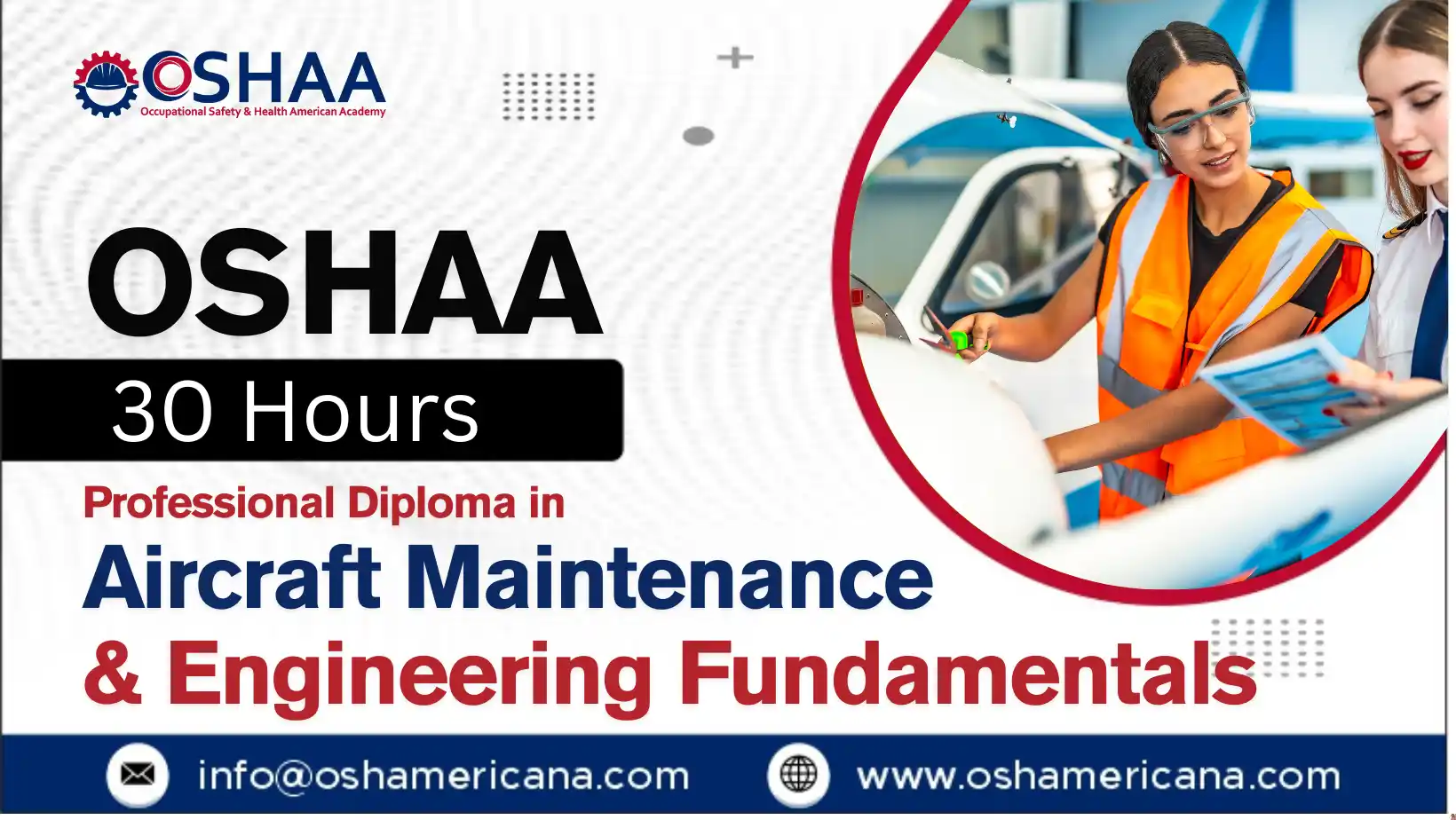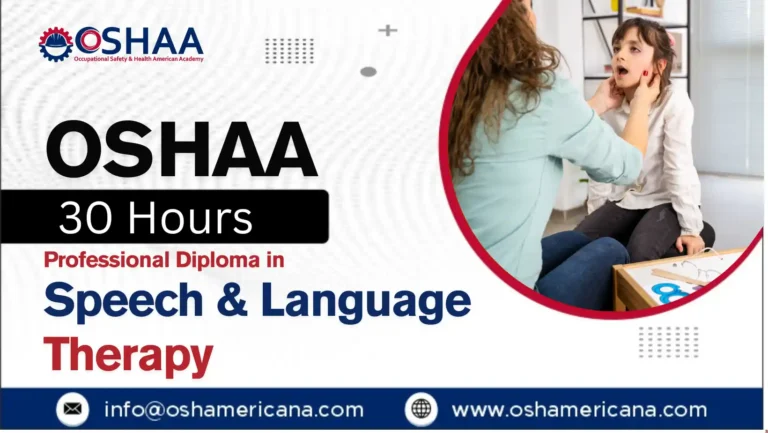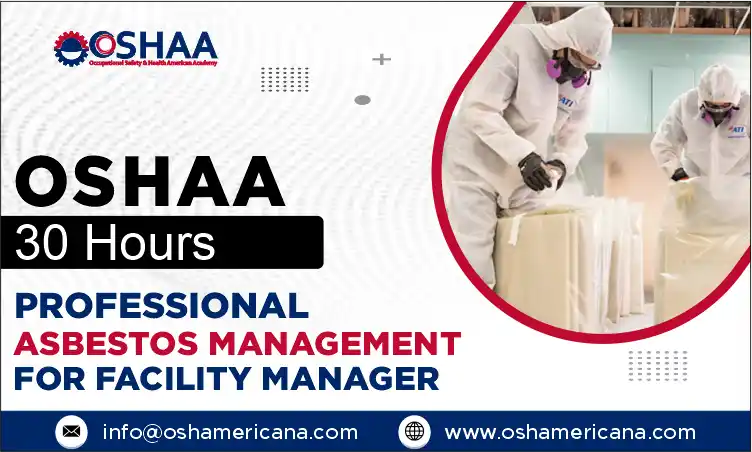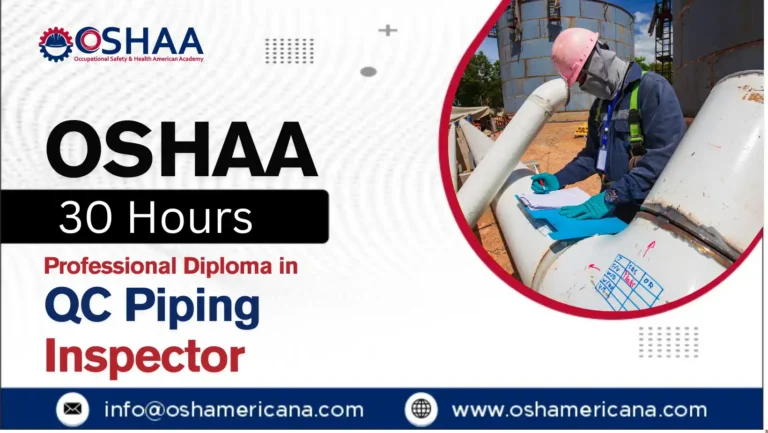Advance your expertise with the OSHAA 30-Hours Professional Diploma in Aircraft Maintenance and Engineering Fundamentals. Gain skills in compliance, safety, and aviation engineering.
The OSHAA 30-Hours Professional Diploma in Aircraft Maintenance and Engineering Fundamentals is a specialized training program designed to provide aviation professionals, engineers, and aspiring technicians with the essential knowledge and practical skills required to excel in the highly regulated field of aircraft maintenance and engineering. This program emphasizes the importance of OSHA standards, international aviation regulations, and engineering fundamentals, ensuring that learners are fully prepared to meet global compliance requirements while enhancing safety, efficiency, and technical proficiency in aviation operations.
Aircraft maintenance and engineering are critical components of the aviation industry, directly impacting safety, reliability, and operational performance. The OSHAA 30-Hours Professional Diploma in Aircraft Maintenance and Engineering Fundamentals equips participants with a strong foundation in aircraft systems, maintenance procedures, safety protocols, and engineering principles. Learners gain the ability to apply risk management strategies, conduct inspections, and implement preventive maintenance practices that reduce downtime, improve efficiency, and ensure compliance with international aviation standards.
This course is highly relevant for aviation engineers, maintenance supervisors, safety officers, and technical staff who are responsible for ensuring the airworthiness of aircraft and adherence to workplace safety standards. By completing the OSHAA 30-Hours Professional Diploma in Aircraft Maintenance and Engineering Fundamentals, participants develop advanced competencies in hazard identification, regulatory compliance, and technical problem-solving. The program also strengthens leadership and communication skills, enabling professionals to manage teams effectively, coordinate with stakeholders, and foster a culture of safety and accountability within aviation organizations.
The curriculum covers a wide range of essential areas, including OSHA regulations, international compliance frameworks, engineering fundamentals, aircraft systems, safety management systems, and emergency preparedness. Learners also explore the role of human factors in aviation safety, the importance of workplace safety culture, and the integration of sustainability into aircraft maintenance and engineering practices. By combining theoretical knowledge with real-world case studies, the OSHAA 30-Hours Professional Diploma in Aircraft Maintenance and Engineering Fundamentals ensures that participants are workplace-ready and capable of applying best practices in compliance, safety, and engineering operations.
Completing the OSHAA 30-Hours Professional Diploma in Aircraft Maintenance and Engineering Fundamentals provides participants with a globally recognized credential that demonstrates their commitment to safety, compliance, and professional development. Employers value this qualification as it reflects the ability to uphold international aviation standards, reduce risks, and contribute to the long-term success of aviation organizations. This course is more than just a training program; it is a career-defining opportunity that empowers professionals to lead safety initiatives, ensure regulatory compliance, and drive operational excellence in the dynamic and globally significant field of aircraft maintenance and engineering.
OSHAA 30-Hours Professional Diploma in Aircraft Maintenance and Engineering Fundamentals
To enroll in the OSHAA 30-Hours Professional Diploma in Aircraft Maintenance and Engineering Fundamentals, learners are expected to meet the following criteria:
- Age Requirement
- Applicants must be at least 18 years of age to register for the OSHAA 30-Hours Professional Diploma in Aircraft Maintenance and Engineering Fundamentals. This minimum age requirement ensures that participants have the maturity, responsibility, and professional readiness to engage with advanced training in aviation safety, engineering fundamentals, and regulatory compliance. Meeting this standard guarantees that learners are prepared to handle the technical and safety-critical aspects of the aviation maintenance industry.
- Educational Background
- A high school diploma or equivalent qualification is recommended as the minimum educational requirement for admission into the OSHAA 30-Hours Professional Diploma in Aircraft Maintenance and Engineering Fundamentals. While this serves as the foundation, candidates with higher education in aviation, aeronautical engineering, mechanical engineering, or related technical fields will have an advantage. The program builds on fundamental knowledge to deliver advanced insights into aircraft systems, OSHA compliance, and engineering practices, ensuring learners can maximize the professional development opportunities offered by the course.
- Work Experience
- Prior work experience is not mandatory for enrollment in the OSHAA 30-Hours Professional Diploma in Aircraft Maintenance and Engineering Fundamentals. However, individuals with professional exposure to aviation operations, aircraft maintenance, engineering workshops, or safety oversight will benefit from a deeper contextual understanding of the course material. The program is designed to accommodate both newcomers seeking to enter the aviation and aerospace industry and experienced professionals aiming to strengthen their credentials, enhance compliance knowledge, and advance their careers in aircraft maintenance and engineering.
- English Proficiency
- Learners enrolling in the OSHAA 30-Hours Professional Diploma in Aircraft Maintenance and Engineering Fundamentals must demonstrate the ability to read, write, and communicate effectively in English. Proficiency in English is essential for understanding course materials, technical manuals, safety documentation, and international regulatory requirements, as well as for engaging in assessments and professional discussions throughout the program. This ensures that participants can fully grasp the technical, regulatory, and strategic aspects of aviation maintenance and engineering training.
Meeting these eligibility requirements ensures that participants are well-prepared to succeed in the OSHAA 30-Hours Professional Diploma in Aircraft Maintenance and Engineering Fundamentals. By establishing clear entry criteria, the program maintains its professional standards while equipping learners with the knowledge and skills necessary to thrive in the highly regulated and safety-driven fields of aircraft maintenance, OSHA compliance, and aviation engineering. This structured approach guarantees that every participant is positioned to gain maximum value from the diploma and to apply its principles effectively in real-world aviation and aerospace environments.
Study Units
Learning Outcomes
The Learning Outcomes of the OSHAA 30-Hours Professional Diploma in Aircraft Maintenance and Engineering Fundamentals are designed to equip participants with advanced technical skills, compliance knowledge, and safety leadership abilities essential for success in the aviation industry. This course provides learners with the expertise to manage aircraft maintenance operations effectively, ensure adherence to OSHA and international aviation standards, and implement risk management strategies that enhance both safety and operational efficiency. By completing this program, participants will gain the competencies required to excel in highly regulated, safety-driven environments while contributing to professional growth and organizational excellence.
- Introduction to Aircraft Maintenance and Global Aviation Safety Standards (3 Hours)
- Understand the global importance of aircraft maintenance in ensuring aviation safety and reliability.
- Identify international safety standards and their role in shaping maintenance practices.
- Demonstrate knowledge of how compliance frameworks integrate into aviation operations.
- Recognize the importance of aligning maintenance procedures with OSHA and ICAO standards.
- Fundamentals of OSHA Regulations and International Aviation Compliance (3 Hours)
- Gain a comprehensive understanding of OSHA standards and their application in aircraft maintenance.
- Interpret international aviation regulations, including ICAO, EASA, and FAA requirements.
- Apply occupational health and safety principles to engineering and maintenance environments.
- Develop awareness of employer responsibilities, employee rights, and enforcement mechanisms.
- Principles of Aircraft Engineering and Technical Systems (3 Hours)
- Learn the fundamentals of aircraft engineering and the role of technical systems in safe operations.
- Understand the function and interdependence of avionics, propulsion, and hydraulic systems.
- Apply engineering principles to troubleshoot and maintain aircraft systems effectively.
- Develop technical competencies to ensure compliance with engineering and safety standards.
- Aircraft Structures, Materials, and Maintenance Procedures (3 Hours)
- Gain knowledge of aircraft structural components and material properties.
- Understand maintenance procedures for airframes, engines, and critical systems.
- Apply inspection techniques to detect wear, fatigue, and structural damage.
- Implement preventive maintenance practices to enhance aircraft reliability and safety.
- Hazard Identification, Risk Assessment, and Control in Aircraft Maintenance (3 Hours)
- Conduct systematic hazard identification in aircraft maintenance operations.
- Apply risk assessment methodologies to evaluate workplace threats and technical risks.
- Develop control measures to mitigate hazards and enhance operational safety.
- Integrate hazard prevention strategies into daily maintenance workflows.
- Safety Management Systems and Workplace Safety Culture in Engineering (3 Hours)
- Understand the structure and function of Safety Management Systems (SMS) in aviation.
- Apply proactive safety management practices to reduce risks and incidents.
- Promote a positive workplace safety culture within engineering and maintenance teams.
- Integrate SMS into organizational operations for long-term compliance and safety.
- Human Factors in Aircraft Maintenance and Engineering Operations (3 Hours)
- Recognize the role of human factors in aviation safety and engineering performance.
- Understand the impact of fatigue, stress, and communication on maintenance outcomes.
- Apply leadership strategies to encourage employee engagement in safety initiatives.
- Strengthen teamwork and communication skills to improve safety culture.
- Emergency Response Planning and Crisis Management in Aviation Maintenance (3 Hours)
- Understand the fundamentals of emergency response planning in aviation maintenance.
- Develop crisis management strategies for accidents, technical failures, and security threats.
- Apply communication protocols during emergencies to ensure coordinated responses.
- Evaluate case studies of past incidents to strengthen preparedness and resilience.
- Regulatory Audits, Compliance Monitoring, and Quality Assurance (3 Hours)
- Interpret international aviation compliance frameworks and oversight mechanisms.
- Apply compliance strategies to ensure adherence to safety and operational requirements.
- Understand the role of audits, inspections, and certifications in maintaining compliance.
- Develop strategies for continuous improvement in regulatory adherence and quality assurance.
- Final Assessment, Case Studies, and Professional Applications (3 Hours)
- Demonstrate mastery of knowledge gained throughout the OSHAA 30-Hours Professional Diploma in Aircraft Maintenance and Engineering Fundamentals.
- Apply theoretical knowledge to real-world case studies and operational scenarios.
- Develop problem-solving skills for complex safety, compliance, and engineering challenges.
- Showcase professional readiness to lead in aircraft maintenance and regulatory compliance.
By completing the OSHAA 30-Hours Professional Diploma in Aircraft Maintenance and Engineering Fundamentals, participants will be fully prepared to lead safety initiatives, ensure compliance with international standards, and foster a strong safety culture within aviation organizations. This course empowers learners to advance their careers, contribute to safer and more efficient operations, and position themselves as trusted professionals in the global aviation and aerospace industry.
The OSHAA 30-Hours Professional Diploma in Aircraft Maintenance and Engineering Fundamentals offers a wide range of benefits designed to strengthen the expertise of aviation professionals, organizations, and stakeholders. This program equips learners with advanced technical knowledge, compliance awareness, and safety leadership skills that are essential in today’s highly regulated aviation industry. By focusing on OSHA standards, international aviation regulations, and engineering fundamentals, the course ensures participants are prepared to meet global safety requirements, enhance operational efficiency, and advance their professional development.
- Comprehensive Knowledge of Aircraft Maintenance
- Learners gain a strong foundation in aircraft systems, structures, and engineering fundamentals. This knowledge allows them to perform maintenance tasks with precision and ensure compliance with international aviation standards.
- Regulatory Compliance and Legal Protection
- The course emphasizes OSHA regulations and international aviation compliance, enabling participants to reduce liability, avoid penalties, and protect organizations from legal risks while maintaining operational integrity.
- Enhanced Workplace Safety and Risk Reduction
- By mastering hazard identification, risk assessment, and control measures, learners contribute to safer maintenance environments, reducing accidents, incidents, and costly disruptions.
- Professional Development and Career Advancement
- Completing the OSHAA 30-Hours Professional Diploma in Aircraft Maintenance and Engineering Fundamentals enhances professional credentials, opening opportunities for leadership roles in aviation maintenance, engineering, and safety management.
- Operational Efficiency and Cost Savings
- Participants learn strategies to streamline maintenance procedures, inspections, and compliance audits, leading to improved efficiency, reduced downtime, and significant cost savings for aviation organizations.
- Leadership and Communication Skills
- The program develops essential leadership and communication abilities, preparing learners to manage engineering teams, coordinate with stakeholders, and foster a culture of accountability and safety.
- Improved Worker Well-being and Productivity
- By applying occupational health and safety principles, participants help create healthier workplaces, boosting morale, reducing absenteeism, and increasing overall productivity in aviation maintenance operations.
- Emergency Preparedness and Crisis Management
- Learners acquire the ability to design and implement emergency response plans, ensuring readiness for technical failures, accidents, or security threats, thereby safeguarding lives and assets.
- Global Industry Relevance
- The OSHAA 30-Hours Professional Diploma in Aircraft Maintenance and Engineering Fundamentals aligns with international aviation standards, making it valuable for professionals seeking opportunities in global markets.
- Continuous Improvement and Innovation
- Participants are trained to adopt proactive safety management systems and innovative engineering practices, ensuring ongoing improvement in compliance, efficiency, and sustainability.
- Sustainability and Environmental Responsibility
- The program highlights eco-friendly practices in aviation maintenance, equipping learners to integrate sustainability into daily workflows and align with global environmental goals.
- Stronger Organizational Reputation
- Organizations benefit from employees who hold this diploma, as it demonstrates a commitment to safety, compliance, and engineering excellence, enhancing credibility in the aviation industry.
- Practical Application of Knowledge
- Through case studies and real-world scenarios, learners apply theoretical knowledge to practical challenges, ensuring they are workplace-ready and capable of immediate impact.
- Risk Management and Incident Prevention
- The course equips participants with advanced risk assessment skills, enabling them to anticipate potential hazards and implement preventive measures that protect both personnel and assets.
- Global Career Competitiveness
- With its focus on compliance, safety, and engineering expertise, the OSHAA 30-Hours Professional Diploma in Aircraft Maintenance and Engineering Fundamentals enhances employability and competitiveness in the international aviation industry.
By completing the OSHAA 30-Hours Professional Diploma in Aircraft Maintenance and Engineering Fundamentals, participants gain advanced technical knowledge, leadership skills, and compliance expertise that prepare them to lead safety initiatives, ensure regulatory adherence, and foster a culture of excellence. This course empowers professionals to advance their careers, contribute to safer and more efficient operations, and position themselves as trusted leaders in the global aviation and aerospace sector.
The OSHAA 30-Hours Professional Diploma in Aircraft Maintenance and Engineering Fundamentals is designed for aviation professionals, technical staff, and organizational stakeholders who are responsible for ensuring safety, compliance, and operational excellence in the aviation and aerospace industry. This program is highly relevant for individuals seeking to strengthen their expertise in OSHA compliance, workplace safety standards, and engineering fundamentals. By addressing global aviation regulations, technical maintenance practices, and professional development, the course ensures participants are equipped with the advanced knowledge and leadership skills required to thrive in one of the most safety-critical and globally significant industries.
- Safety Managers
- Oversee the development and implementation of workplace safety programs in aviation organizations.
- This course provides advanced knowledge of OSHA standards and international aviation safety frameworks.
- They gain the ability to design and enforce hazard prevention strategies that reduce risks.
- Supports their role in ensuring compliance, protecting workers, and maintaining operational efficiency.
- Aircraft Maintenance Engineers
- Responsible for maintaining, repairing, and certifying aircraft systems and structures.
- The program equips them with updated engineering fundamentals and compliance knowledge.
- They gain practical skills to improve inspection accuracy and maintenance reliability.
- Enhances their ability to align technical work with OSHA compliance and aviation safety standards.
- HSE Officers
- Focus on health, safety, and environmental compliance within aviation and engineering operations.
- The course strengthens their expertise in hazard identification, risk assessment, and emergency planning.
- They gain practical skills to enforce workplace safety standards and reduce risks.
- Ensures they can uphold OSHA compliance while promoting a culture of safety.
- Operations Supervisors
- Manage daily aviation and engineering operations, ensuring smooth workflows and efficiency.
- The program equips them with tools to oversee maintenance procedures, safety protocols, and compliance audits.
- They develop stronger leadership and communication skills to coordinate teams effectively.
- Enhances their ability to align operations with OSHA compliance and global aviation standards.
- Airport Ground Handling Staff
- Directly involved in aircraft servicing, cargo loading, and ramp operations.
- The course provides essential training in safety protocols and equipment handling.
- They learn to minimize risks and prevent accidents during high-pressure operations.
- Supports their role in maintaining compliance and operational safety.
- Aviation Administrators and Managers
- Responsible for policy-making, compliance oversight, and operational leadership.
- The course equips them with strategic insights into safety management systems and regulatory frameworks.
- They develop the ability to integrate compliance frameworks into organizational policies.
- Strengthens their capacity to lead teams while ensuring OSHA compliance and global standards.
- Emergency Response and Crisis Management Teams
- Tasked with preparing for and responding to aviation-related emergencies.
- The program provides advanced training in crisis management and emergency planning.
- They gain the ability to coordinate responses and mitigate risks effectively.
- Supports their role in safeguarding lives, assets, and compliance with safety regulations.
- Aviation Safety Inspectors and Auditors
- Monitor compliance and conduct safety audits in aviation and engineering operations.
- The program strengthens their ability to evaluate workplace safety and operational practices.
- They gain insights into OSHA standards and international aviation compliance frameworks.
- Supports their role in ensuring organizations meet regulatory and safety requirements.
- Regulatory Authorities and Compliance Officers
- Oversee aviation safety regulations and ensure adherence to international standards.
- The course provides advanced insights into OSHA compliance and global aviation oversight.
- They gain the ability to conduct inspections, audits, and compliance assessments effectively.
- Supports their role in maintaining safety, accountability, and operational excellence.
- Aspiring Aviation and Engineering Professionals
- Individuals seeking to enter the aviation and aerospace industry with strong credentials.
- The course provides foundational knowledge of aircraft maintenance, compliance, and engineering fundamentals.
- They gain a competitive advantage in securing roles within aviation and engineering organizations.
- Equips them with OSHA-aligned training that enhances employability and career growth.
By completing the OSHAA 30-Hours Professional Diploma in Aircraft Maintenance and Engineering Fundamentals, participants across all professional levels gain advanced knowledge, practical skills, and globally recognized training that enhances safety, compliance, and operational excellence. This course empowers individuals and organizations to meet international aviation standards, strengthen workplace safety, and achieve sustainable professional development in the highly competitive aviation and aerospace industry.







